Have you ever been confused about choosing the right equipment rack or installing and commissioning it? If yes, then this article is for you. It introduces the importance, structure, design, material, manufacturing process, installation, commissioning, and compatibility and standardization issues of the equipment rack, and also recommends Richconn, a professional equipment rack manufacturer. Read on to learn more!

The rack, an exquisitely designed toothed band, acts as a crucial element over which the pinion gear gracefully runs, enabling the seamless movement of the body of the CNC machine from one position to another with effortless fluidity. It is customarily attached firmly to the base of the CNC, be it directly to the worktable itself, with its inherent sturdiness and dependability, or to a frame that is securely fastened to it, providing a stable foundation and support for the efficient operation of the machine.
The equipment rack plays a crucial role in the equipment and its importance cannot be ignored. Next, let's take a look together from these three aspects.
The Vital Role of Support Structure
As the support structure of the equipment, it bears various components to ensure its stable and safe operation. In modern industrial production, the stability of the equipment rack is directly related to the production line and production efficiency. For example, in an automated production line, the precision and stability of the rack directly affects the operation precision and product quality of the equipment. According to relevant data, for every 0.1mm improvement in the mechanical rack's precision, the product qualification rate can increase by more than 5%.
The Impact of Material and Manufacturing Processes
The material and manufacturing process of the rack also directly affect its role and importance in the equipment. High-quality materials and advanced manufacturing techniques can ensure that the rack has sufficient strength and rigidity to withstand various external forces and vibrations generated during the operation of the equipment. At the same time, the design of the rack also needs to consider the heat dissipation and maintenance needs of the equipment to ensure the long-term stable operation of the equipment.
Enhancing Overall Equipment Performance
The importance of the rack is also reflected in its improvement of the overall performance of the equipment. A rationally designed rack can effectively reduce the vibration and noise during the operation of the equipment and improve the stability and reliability of the equipment. At the same time, the rack can also optimize the layout and wiring of the equipment to make the equipment more compact and beautiful and improve the overall performance of the equipment. Therefore, in the process of R & D and manufacturing of the equipment, the design and manufacture of the rack should receive sufficient attention and investment.
The equipment rack is crucial in various fields. To understand and utilize it well, we need to explore its structure, design principles, and factors. Now let's start.
Basic Structure and Component Parts
The basic structure of the equipment rack is the key to supporting and fixing the equipment. It consists of multiple component parts working together to ensure the stable operation of the equipment. The main frame of the rack is usually welded from high-strength steel, which has excellent bearing capacity and stability. At the bottom of the rack, adjustable support feet are usually provided to adapt to different ground environments and ensure the horizontal placement of the rack. In addition, the rack is also internally designed with reasonable wiring grooves and cooling holes to meet the wiring and cooling requirements of the equipment.
The basic structure and component parts of the equipment rack are the key to ensuring its stable operation and efficient work. By deeply understanding the structure and design principles of the rack, we can better select and use the mechanical rack to improve the overall performance and reliability of the equipment.
Design Principles and Consideration Factors
When designing the rack, the design principles and consideration factors play a crucial role. Let’s take a look together.
Stable Structure
First, the design of the rack must follow the principle of stable structure to ensure a stable operating state in various working environments. For example, in the application scenario of the CNC center, the rack needs to bear the weight and vibration of a large number of devices, so its structure must be strong enough to prevent deformation or damage.
Ventilation and Heat Dissipation
Secondly, the design of the rack also needs to consider the ventilation and heat dissipation requirements. Through reasonable layout and structural design, the heat dissipation efficiency can be improved to ensure the stable operation of the equipment.
Ease of Use and Maintainability
In addition, the design of the rack also needs to consider the ease of use and maintainability. For example, to facilitate the installation and disassembly of the equipment, the rack should be designed with easy-to-operate interfaces and tools; at the same time, to facilitate maintenance and management, the rack should also have structural features that are easy to observe and detect.
Application of Principles and Theories
The application of design principles and consideration factors can also draw on some classic analysis models or theories. For example, when designing the heat dissipation system of the rack, mechanics principles can be borrowed to optimize the heat dissipation layout and fan configuration through calculating and analyzing processes such as heat conduction, convection, and radiation to improve the heat dissipation efficiency. At the same time, when designing the structure of the CNC rack and pinion, structural mechanics principles can be borrowed to optimize the structural design by analyzing and calculating the force and deformation situation of the rack to improve the rack's bearing capacity and stability.
In a word, design principles and consideration factors play a decisive role in the design of the rack. We should abide by principles like stable structure, heat dissipation performance, ease of use and maintainability. If we can combine the application of specific cases and analysis models, then we are able to design rack products that are more stable, efficient and reliable and in this way, provide a powerful guarantee for the stable operation of the equipment.

In the world of manufacturing, the selection of materials and the processes involved play a crucial role. In particular, when it comes to the manufacturing of the rack, understanding these aspects is essential.
Common Materials and Their Characteristics
In the manufacturing process of the rack, the choice of material is very important. It not only determines the basic performance of the rack, but also affects its service life and cost-effectiveness. Common rack materials include metals, plastics, and composite materials, etc. For details, please refer to Table 1.
Material | Features | Applicable Environment | |
Metal | Stainless Steel | High strength, corrosion resistance, and strong durability | Performs excellently in harsh environments |
Aluminum Alloy | Lightweight, corrosion resistance, and good heat dissipation performance | Used in the field of electronic equipment | |
Plastic | Low cost, insulation, and convenient processing | Low required strength, used in a normal temperature environment | |
Composite Material | High strength, light texture, corrosion resistance, and high processing cost | Wide range of environmental adaptability | |
Table 1
When it comes to selecting the material for the rack, aside from its performance characteristics, factors such as cost, processing difficulty, and environmental friendliness need to be comprehensively taken into account. With the continuous advancement of technology and the enhancement of environmental awareness, an increasing number of rack manufacturers have begun to focus on the research and development and application of new environmentally-friendly materials. For instance, some research teams are exploring the use of bio-based materials or degradable materials to manufacture racks in order to reduce the impact on the environment. These new materials not only possess excellent performance but also conform to the requirements of sustainable development, bringing new development opportunities to the field of rack manufacturing.
Manufacturing Process and Procedure
The manufacturing techniques and processes of the rack are the key links to ensuring the stability and durability of the equipment. Now let's get to know about them together.
Material Cutting and Stamping
Firstly, in the manufacturing process of the rack, precise cutting and stamping of raw materials need to be carried out according to the design drawings to ensure that the sizes and shapes of various components meet the design requirements.
Component Assembly
Then, assemble various components together through methods such as welding or riveting to form a complete rack and pinion mechanism structure. In this process, the selection of welding technology and the control of welding quality are crucial, which directly affect the strength and stability of the rack. For example, adopting advanced laser welding technology can significantly improve welding quality and efficiency and reduce the occurrence of welding deformation and cracks. Robot welding technology can also be used to weld the rack, reducing human interference and making the welding more uniform and firm.
Surface Treatment and Coating
In the process of rack manufacturing, a series of surface treatments and coating work also need to be carried out to improve the anti-corrosion performance and aesthetics of the rack. Common surface treatment methods include sandblasting, photostatting, electroplating, etc. These treatments can remove dirt and oxide layers on the surface of the rack and increase the adhesion of the coating. The coating process usually adopts electrostatic spraying or powder spraying technology, which can ensure uniform coating, strong adhesion, and good weather resistance and corrosion resistance.
In addition, strict quality control and testing need to be carried out in the rack manufacturing process. This includes the quality inspection of raw materials, the inspection of welding quality, and the evaluation of coating quality. Through these quality control measures, it can be ensured that the manufacturing quality of the rack meets the design requirements and can meet the actual usage needs.

The importance of proper equipment rack installation and its associated considerations cannot be overstated. Let's take a closer look at it.
Installation Steps and Precautions
When installing the equipment rack, a series of strict steps and precautions must be followed to ensure the stability and safety of the rack. The following are the main points:
Pre-installation Preparation:
✔ Conduct a comprehensive inspection of the rack to ensure it is intact without damage or deformation.
✔ Select the appropriate installation location and fixation method based on equipment specifications and the installation environment.
Installation Process:
✔ Strictly follow the operation manual or professional guidance to avoid errors or omissions.
✔ When fixing the rack, use proper bolts and nuts and ensure an appropriate fastening force to prevent deformation or loosening.
Load-bearing and Stability Consideration:
✔ Pay attention to the rack's load-bearing capacity and stability. Choose the right rack model and specification according to the weight and operating characteristics of the equipment.
✔ Ensure the rack's levelness and perpendicularity during the installation process to avoid tilting or distortion.
Connection and Interface:
✔ Focus on the connection mode and interface between the rack and the equipment to ensure a firm and stable connection and avoid loosening or detachment.
Testing and Evaluation:
✔ Use the method of simulated load testing by simulating the load situation in the actual working environment to test the rack's performance and stability.
✔ During the debugging process, pay attention to data collection and analysis to quantitatively assess the rack's performance and identify potential problems. Use data analysis models to predict the rack's life and failure trend for subsequent maintenance.
Summary and Improvement:
✔ Continuously summarize experiences and lessons and improve debugging methods and techniques. Each debugging is a valuable learning opportunity to enhance professional skills.
✔ Draw on successful experiences and technological innovations from other industries to promote the progress of rack debugging work.
The Bearing Capacity and Structural Stability Issues of the Rack in the Equipment
The load-bearing and structural stability of the rack in the equipment has always been the focus of attention in the industry. With the continuous improvement of equipment performance, higher requirements are put forward for the load-bearing capacity of the rack. For example, in the field of data centers, large servers and storage devices need to be installed on the rack, and the weight and volume of these devices are often relatively large, posing a severe challenge to the load-bearing capacity of the rack. Therefore, the load-bearing design of the rack must fully consider the weight distribution and force situation of the equipment to ensure that the rack can stably support the equipment and prevent equipment damage or safety accidents due to insufficient load-bearing.
In addition to the load-bearing capacity, the structural stability of the rack is also of crucial importance. The structural design of the rack needs to take into account the installation method and operating characteristics of the equipment to ensure that while bearing the weight of the equipment, the rack can maintain the stability and rigidity of the structure. In practical applications, some racks, due to unreasonable structural design or improper material selection, deform or distort when bearing the weight of the equipment, seriously affecting the normal operation and service life of the equipment. Therefore, the structural design of the rack must go through strict calculation and testing to ensure that it can maintain stable structural performance under various working conditions.
The Compatibility and Standardization Issues of the Rack in the Equipment
The compatibility and standardization of the rack in equipment are always emphasized in the industry. Due to technological progress and equipment variety, the rack's compatibility is crucial for equipment performance and usage. In practice, differences in rack designs cause compatibility issues during inheritance and deployment, increasing costs and potentially causing performance drops and faults.
To solve this, the industry has started promoting the rack's standardization by setting unified sizes, structural specs, etc., enhancing compatibility and reducing equipment integration and deployment difficulties. In the data center field, for instance, rack standardization is a consensus, and using standardized racks enables easy rapid deployment and flexible expansion, improving the data center's operating efficiency.
Yet, standardizing the rack is not straightforward. Specialties of different industries and scenarios must be fully considered. In industrial automation equipment, due to the harsh environment and diverse types, higher demands are on the rack's compatibility and standardization. When formulating standards, these special requirements need re-examination and consideration to meet practical needs.
Also, addressing the rack's compatibility and standardization issues requires technological innovation. Through R & D of advanced rack design and interface technologies, the compatibility and standardization level can be further enhanced. Strengthening inter-industry cooperation and communication to jointly promote the standardization process is an effective way.
In conclusion, these issues are complex and important. By promoting the rack's standardization process, and strengthening innovation and cooperation, the problem can be gradually resolved, and equipment performance and usage improved.
After reading through these paragraphs, you must have gained a deep understanding of equipment racks, their requirements, and their applications. Now you may have an idea about the rack you need for your equipment. However, you might not know how to proceed. In this case, contact Richconn for more information regarding racks and our processing services.
✔ We offer comprehensive processing services for rack manufacturing. We work with suitable materials to meet your custom rack requirements. Moreover, we pride ourselves on having highly skilled technicians. Thus, our processing services ensure uniformity and precision in all works to guarantee that the products are of the highest quality.
✔ We provide an online quotation platform where you can get an instant quotation once you upload your design files. Also, you can choose different materials and surface finishing options for your racks at competitive prices.
✔ What’s more, you can monitor your order on this platform and view the entire production process of your rack. We offer significant time savings in the rack processing stage. After the rack is processed, we can also carry out the surface treatment operations you require for your rack, such as sandblasting, electroplating, painting, and other treatments. After your product is fully completed, we will also conduct detailed quality inspections on your rack, including dimensions and appearance. Finally, we will also choose the fastest transportation method to deliver your product to you so that you can obtain it in the shortest possible time.
The article covers various aspects of equipment racks, including their structure, design, material, manufacturing process, installation, commissioning, and standardization. As you can see, Richconn is a company that designs and manufactures equipment racks. Their racks are known for their high quality, durability, and compatibility. They offer a wide range of rack solutions to meet the needs of different industries and applications. Hurry to contact it for professional ideas!
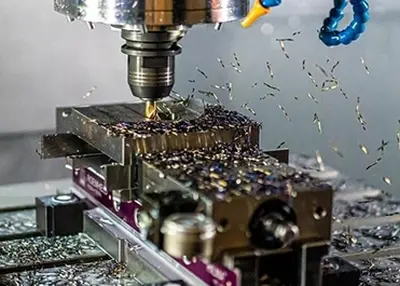 What Kind of Parts Are 5-Axis Suitable for Machining?October 30, 2023Over the past few years, CNC machining technology has evolved from simple machines to more complex ones. 5-axis CNC machining is one of the most advanced machining processes available today. It utilizes subtractive machining techniques that offer endless possibilities for part creation. The technology uses cutting tools that work on 5 axes to cut the workpiece into the desired shape and size.view
What Kind of Parts Are 5-Axis Suitable for Machining?October 30, 2023Over the past few years, CNC machining technology has evolved from simple machines to more complex ones. 5-axis CNC machining is one of the most advanced machining processes available today. It utilizes subtractive machining techniques that offer endless possibilities for part creation. The technology uses cutting tools that work on 5 axes to cut the workpiece into the desired shape and size.view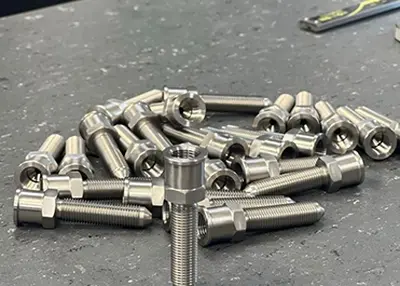 What Are Machining Operations?November 3, 2023Machining operations are at the core of modern manufacturing. These processes are the backbone of industries like aerospace, automotive, and electronics, allowing for precise shaping and finishing of materials.view
What Are Machining Operations?November 3, 2023Machining operations are at the core of modern manufacturing. These processes are the backbone of industries like aerospace, automotive, and electronics, allowing for precise shaping and finishing of materials.view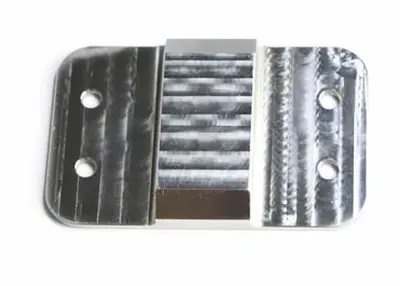 Choosing the Right Finish for Your CNC PartsSeptember 7, 2023From raw CNC machined parts to a final product that gleams with quality involves a crucial decision – selecting the right surface finish or treatment. Choosing the right surface finish or treatment f...view
Choosing the Right Finish for Your CNC PartsSeptember 7, 2023From raw CNC machined parts to a final product that gleams with quality involves a crucial decision – selecting the right surface finish or treatment. Choosing the right surface finish or treatment f...view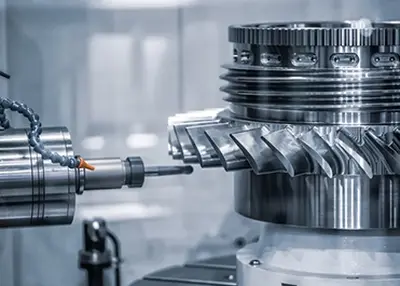 Machining Commonly Used 24 Kinds of MaterialsOctober 23, 2023Can be used for CNC machining, mold processing of more than a hundred kinds of materials, metal, plastic, but according to the actual needs of different, each material use as well as the demand varies, the most commonly used 24 kinds of materials.view
Machining Commonly Used 24 Kinds of MaterialsOctober 23, 2023Can be used for CNC machining, mold processing of more than a hundred kinds of materials, metal, plastic, but according to the actual needs of different, each material use as well as the demand varies, the most commonly used 24 kinds of materials.view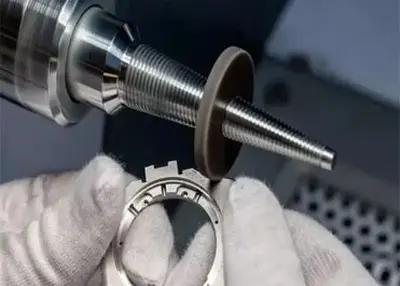 All the Information You Need to Know About Polishing Surface FinishMarch 1, 2024Here is all the information. Learn more about the necessary details to guarantee your project's success. Check it out.view
All the Information You Need to Know About Polishing Surface FinishMarch 1, 2024Here is all the information. Learn more about the necessary details to guarantee your project's success. Check it out.view Metal Gears vs Plastic Gears: Which Is the Better Option for Your Project?June 28, 2024What are the differences between metal gears and plastic gears? Which is the better option for your project? Let’s find the answers with the help of this article!view
Metal Gears vs Plastic Gears: Which Is the Better Option for Your Project?June 28, 2024What are the differences between metal gears and plastic gears? Which is the better option for your project? Let’s find the answers with the help of this article!view